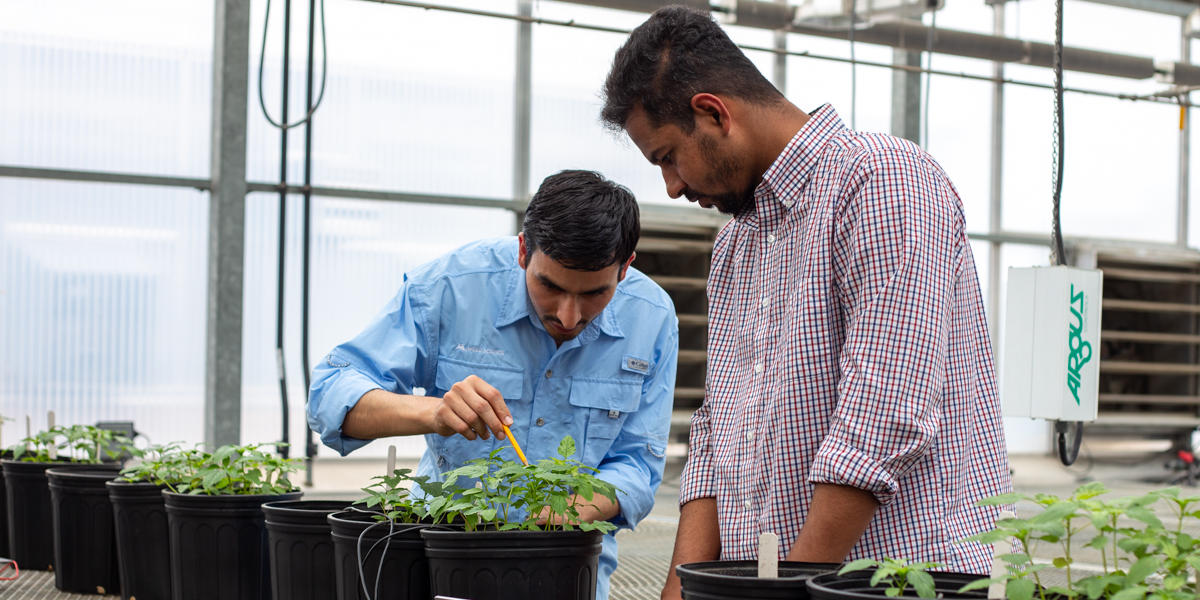
Sachin Dhanda and Sithin Mathew engage with a Palmer amaranth experiment, St. Paul, MN
Background
Palmer amaranth (Amaranthus palmeri) is the most problematic weed in row-crop production in the US. It was first reported in Minnesota in 2016. Because the species is on the Minnesota Prohibited Noxious Weed Eradicate list, it has not been feasible to conduct field experiments, and there is a lack of information about how the species adapts and competes in Minnesota which would inform management strategies. This is further underscored by climate change as Minnesota experiences wetter springs, more common flash floods, and drought in summer.
Palmer amaranth is receiving some competitive challenge from its native relative, waterhemp (Amaranthus tuberculatus). Waterhemp is well-established in Minnesota. The two species have many biological and physiological commonalities, however there is limited data on their relative competitiveness when they coexist, especially in the same climate.
Research question
- How do changes in precipitation/soil moisture influence the emergence and growth of Palmer amaranth?
Practical implications
This research will generate important information on the adaptability of Palmer amaranth to current and future rainfall patterns in Minnesota and build a foundation for future research. The information gained will help land managers choose the most effective management options in the future.
Outcomes
This project began in January 2023 and is in progress for the next 3 years. Please check back at a later time for updates.
To stay connected, sign up for the MITPPC newsletter.
Outreach
- Palmer amaranth ID, distribution, and management options through U of M Extension, 2024